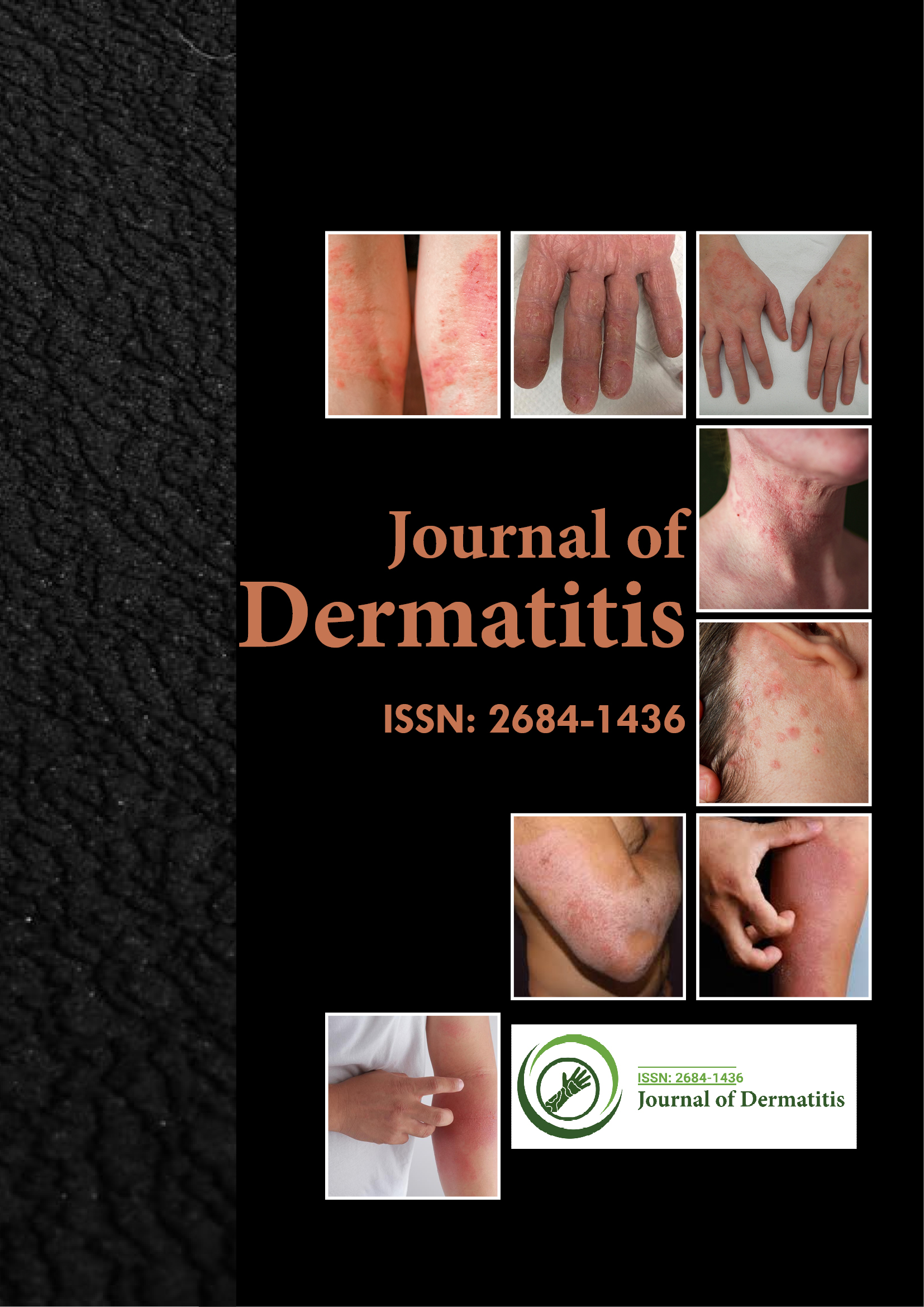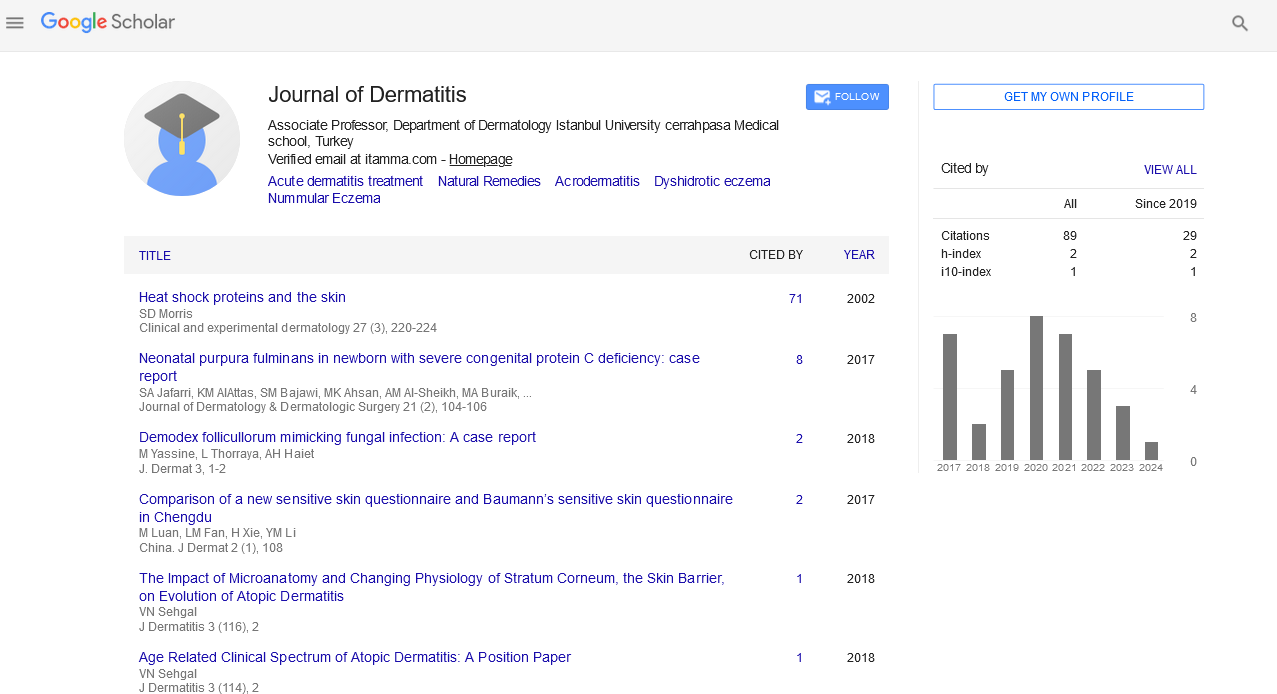Indexed In
- RefSeek
- Hamdard University
- EBSCO A-Z
- Euro Pub
- Google Scholar
Useful Links
Share This Page
Journal Flyer

Open Access Journals
- Agri and Aquaculture
- Biochemistry
- Bioinformatics & Systems Biology
- Business & Management
- Chemistry
- Clinical Sciences
- Engineering
- Food & Nutrition
- General Science
- Genetics & Molecular Biology
- Immunology & Microbiology
- Medical Sciences
- Neuroscience & Psychology
- Nursing & Health Care
- Pharmaceutical Sciences
Perspective - (2022) Volume 7, Issue 5
Skin-Related Components of Actinomycosis
Takahiro Norizuki*Received: 01-Sep-2022, Manuscript No. JOD-22-18171; Editor assigned: 05-Sep-2022, Pre QC No. JOD-22-18171 (PQ); Reviewed: 19-Sep-2022, QC No. JOD-22-18171; Revised: 26-Sep-2022, Manuscript No. JOD-22-18171 (R); Published: 03-Oct-2022, DOI: 10.35248/2684-1436.22.7.164
Description
The first cases of human actinomycosis were originally documented in 1845 by the surgeon Bernhard von Langenbeck and the doctor Antoinne Lembert. Dermatologists believed it to be syphilis at the time, whereas surgeons diagnosed it as submandibular adenitis. The botanist and mycologist Carl Otto Harz coined the name "actinomycosis," which is derived from the Greek words "aktino" and "mykos," which mean "ray-fungus." It got its name from the organisms' distinctive filamentous, branching shape, which resembled fungus hyphae. The samples examined by Harz were submissions from Otto Bolliger, a pathologist who discovered the condition in cattle jaws in 1877. The surgeon James A. Israel showed one of the species to be an infectious disease in humans in 1878.
Actinomyces species, which are linked to humans, produce the granulomatous, chronic illness actinomycosis. Its role as an endogenous infection is well established. The ethelial barrier is disrupted by trauma, surgery, or foreign objects, allowing the causal agents, which live on mucosal surfaces and the skin, access. Actinomycosis is regarded as a rare disease, however data on its actual prevalence are lacking. Clinical signs of it include draining sinus tracts, thick fibrotic tissue response, and abscess formation. The infection is typically categorised as orocervicofacial (50%–65%), thoracic (15%–30%), and abdominopelvic (20%) according on the affected body region. The central nervous (2%–3%) and musculoskeletal (rare) systems, as well as a diffused variant, are less common sites of presentation. Cutaneous actinomycosis typically develops as a result of a deeper tissue infection and spreads through hematogenous or direct extension. Typically, it starts out as an inflamed soft-tissue mass or abscess that may or may not develop fistulous tracts with drainage sites.
The onset of medical therapy is sometimes postponed due to the condition's slow and indolent progression as well as its early vague symptoms. Actinomycosis also has a variety of clinical and radiologic symptoms, which can be difficult to diagnose since they share traits with other inflammatory, viral, and neoplastic entities. Actinomyces are microbiologically isolated in the right clinical environment to establish the diagnosis. Multiple laboratories are currently using MALDI-TOF mass spectrometry and 16S rRNA gene sequence analysis as accurate diagnosis techniques.
High-dose, protracted antibiotic therapy and, infrequently, an interventional procedure such collection drainage or surgical excision/resection may be necessary for the treatment of actinomycosis.
Actinomycosis may need prolonged antibiotic therapy and/or surgical treatments, as necessary. Depending on the demands of each patient, medications should be changed. The majority of medications used to treat infections caused by gram-positive anaerobic rods, including penicillin and other beta-lactam antibiotics, are also effective against infections caused by Actinomyces species. Clindamycin susceptibility varies, with resistance ranging from 17% to 33%. Aminoglycosides and metronidazole are ineffective against these species.
Cervicofacial infection has a favourable prognosis with the use of antibiotics alone if the actinomycosis is identified early. Tetracyclines are just as successful at treating actinomycosis as penicillin. A daily dose of 20 million IU of benzylpenicillin administered intravenously or intramuscularly is not unusual. 2-4 g of oral amoxicillin per day is advised. Patients should have treatment for at least three months, ideally for a further two to three weeks after symptoms have ceased. It can be necessary to make medication changes based on patients' particular minimum inhibitory concentrations (MICs). Actinomyces europaeus and Actinomyces turicensis are the most resistant Actinomyces species, although it is known that different Actinomyces species have different MICs.
As with any other pathological condition, a thorough clinical history is essential. Under the following conditions, it is reasonable to evaluate actinomycosis during the diagnostic process:
The progression of the clinical symptoms shows that the incident was prolonged and was accompanied by a firm mass-like lesion that severely compromised the tissue planes during a course of antibiotic therapy; a brief period of recovery is followed by relapses and recurrences.
Citation: Norizuki T (2022) Skin-Related Components of Actinomycosis. J Dermatitis.7:164.
Copyright: © 2022 Norizuki T. This is an open-access article distributed under the terms of the creative commons attribution license which permits unrestricted use, distribution and reproduction in any medium, provided the original author and source are credited.

